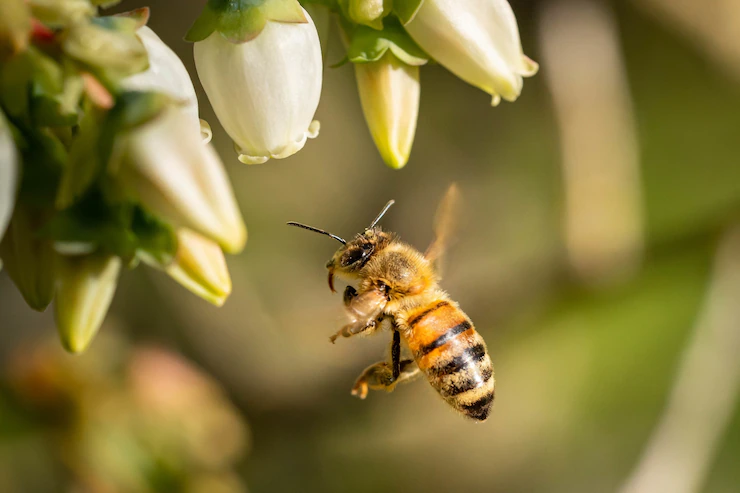It can happen fast. One minute the kids are all playing peacefully outside on a warm, spring day. The next minute a piercing scream reveals that a bee has stung one of them. To help alleviate the panic, dermatologists from the American Academy of Dermatology say it’s a good idea to know what to do – and not do – to treat a bee sting.
“The first thing to do is to get the stinger out quickly,” said board-certified dermatologist Carrie Kovarik, MD, FAAD, an associate professor of dermatology, dermatopathology and infectious diseases at the University of Pennsylvania in Philadelphia. “The longer the stinger stays in the skin, the more venom it releases, adding to the person’s pain and swelling.”

To treat a sting from a bee, wasp or hornet, Dr. Kovarik recommends the following tips:
1. Stay calm. Although most bees usually only sting once wasps and hornets can sting again. If you are stung, calmly walk away from the area to avoid additional attacks.
2. Remove the stinger. If the stinger remains in your skin, remove it by scraping over it with your fingernail or a piece of gauze. Never use tweezers to remove a stinger, as squeezing it can cause more venom to release into your skin.
3. Wash the sting with soap and water.
4. Apply a cold pack to reduce swelling. However, if the swelling moves to other parts of your body, such as your face or neck, go to the emergency room immediately, as you might be having an allergic reaction. Other signs of an allergic reaction include difficulty breathing, nausea, hives or dizziness. People with a known allergy to bee stings should talk to their doctor about having an epinephrine injector available.
5. Consider taking over-the-counter pain medication. Bee, wasp and hornet stings are painful. Painkillers like acetaminophen or ibuprofen can help relieve the pain. If the sting is itchy, consider taking an over-the-counter antihistamine. Always follow the directions on the label and use the correct dose.
“Although most people do not experience severe reactions to bee stings, it’s a good idea to keep an eye on anyone who has been stung in case they develop more serious symptoms,” said Dr. Kovarik. “If you notice any signs of an allergic reaction, or if you or someone you know has been stung multiple times – particularly if he or she is a child – seek medical attention immediately.”
These tips are demonstrated in “How to Treat a Bee Sting,” a video posted on the AAD website and YouTube channel. This video is part of the AAD’s “Video of the Month” series, which offers tips people can use to properly care for their skin, hair, and nails. A new video in the series posts to the AAD website and YouTube channel each month.
About company
Headquartered in Rosemont, Ill., the American Academy of Dermatology, founded in 1938, is the largest, most influential, and most representative of all dermatologic associations. With a membership of more than 19,000 physicians worldwide, the AAD is committed to: advancing the diagnosis and medical, surgical and cosmetic treatment of the skin, hair and nails; advocating high standards in clinical practice, education, and research in dermatology; and supporting and enhancing patient care for a lifetime of healthier skin, hair and nails. For more information, contact the AAD at (888) 462-DERM (3376) or aad.org. Follow the AAD on Facebook (American Academy of Dermatology), Twitter (@AADskin), or YouTube (AcademyofDermatology).



